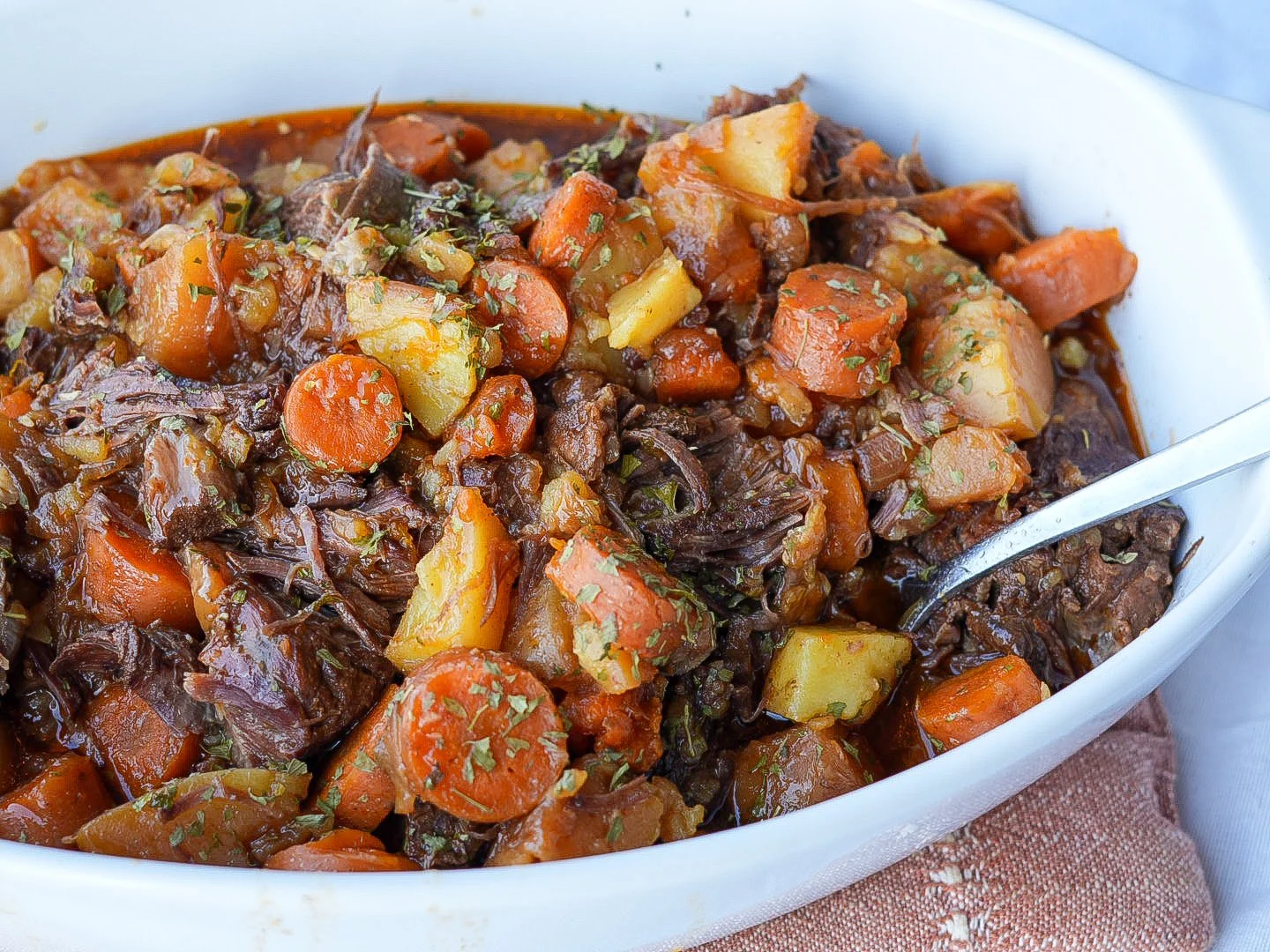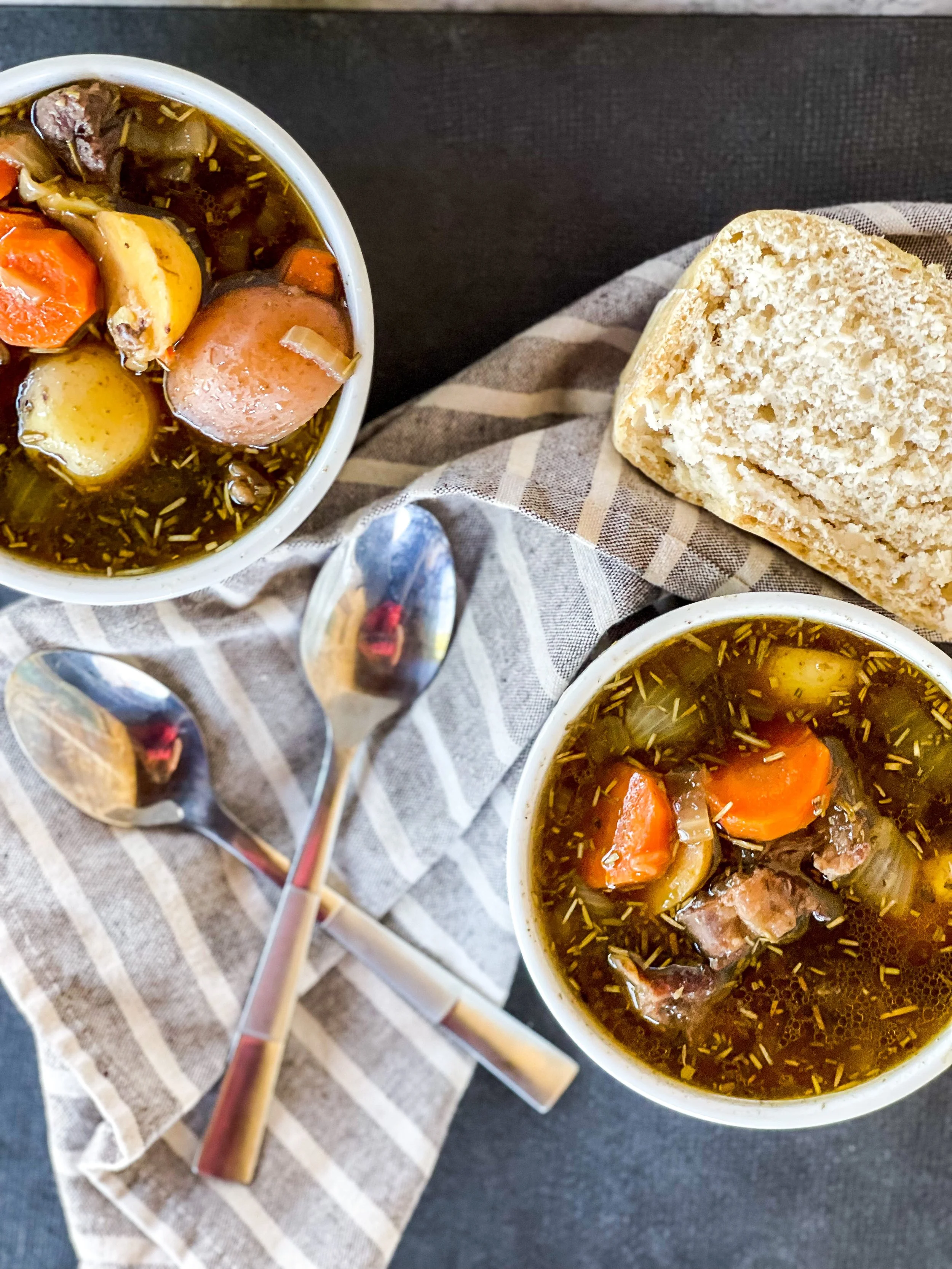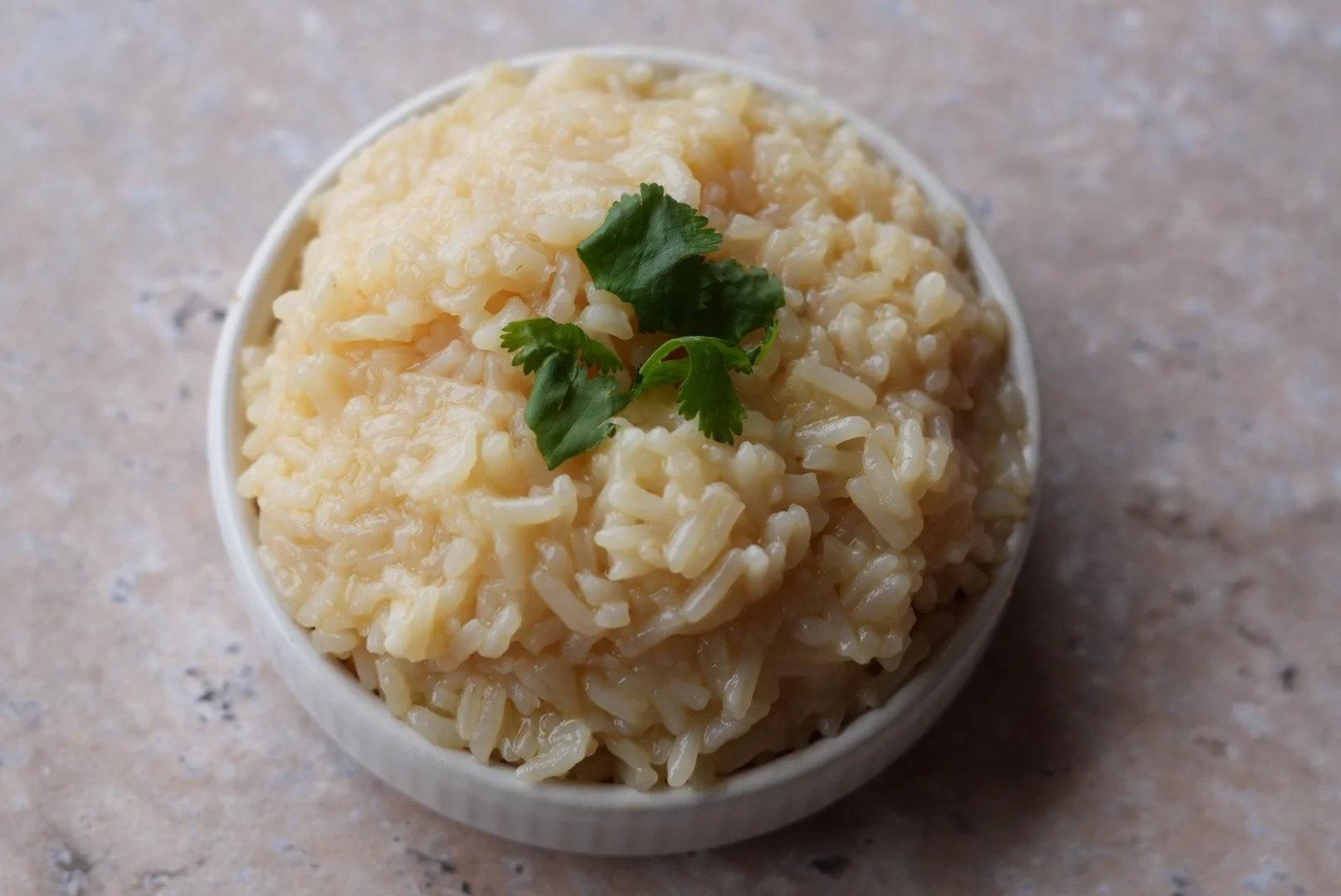What is Ancestral Eating?
When people ask how I would describe my recipes, cookbooks, and eating style, I often answer with something along the lines of “whole food based with ancestral principles”! Or something like “real foods, anti-diet, with a splash of traditional eating!”
To which people (naturally) often respond - “What does Ancestral or Traditional mean when it comes to food?”
I’m so glad you asked! 😉
This is the roast in my upcoming Nourish e-cookbook and wellness guide! Hop on my email list to be alerted when it’s released!
First - if you’re new here - welcome! I’m a certified functional nutritionist (in training!) who helps women feel empowered in their health journey, learn how to confidently eat well, find healing and support during chronic illness, and gain kitchen confidence through simple, delicious recipes for you and your family!
Ancestral Eating Defined
Ancestral-based eating, or traditional eating, is based around foods that humans have been consuming for a good portion of human history - foods and recipes that we could easily find hundreds and even thousands of years ago.
(It overlaps a lot with Biblical eating, since many of the foods we see historically are referenced in Scripture as well!)
Ancestral eating includes the principle of nose-to-tail eating, which means that the entire animal is used and not wasted. Unlike modern day grocery stores with pre-cut and pre-packaged muscle meats, families, farms, and villages would have been incredibly resourceful and not wasteful with their food and animals. That means the muscle meat, organs, bones, skin - ALL of it had it’s use in either food consumption or day to day living.
That may gross us out a bit today because of how we are culturally conditioned, but even our grandparents likely ate things like liver & onions and other “bits and bobs” of the animal.
In fact, a lot of our favorite foods today would have been made with organ meats and animal odds and ends in the past - puddings, jellos, soups, etc!
Ancestral eating also honors what foods are both seasonal and local, both of which can shift a bit depending on your personal ancestry and where you currently live.
For example, a more coastal heritage or current living condition would lend itself more to wild caught seafood. A tropical location would encourage more ripe seasonal fruit year-round. A farm-heavy terrain would support lots of grain growing and cattle raising. You get the picture!
Ancestral eating is also about honoring traditional preparation methods for foods - things like fermenting, soaking, and sprouting (the latter two are typically for grains and legumes! I have a soaking and sprouting guide in my Batch cookbook!)
So with that said, ancestral eating is and isn’t able to fit into a box - it’s a bit individualized but the core principle stands: what have humans been eating for thousands of years?
The core pillars of ancestral eating include things like nose-to-tail eating, local & seasonal foods, fermentation, soaking & sprouting, fresh milling, and slow cooking bone-in meats.
What are the benefits of ancestral eating?
While this would shock us and possibly not be our palate preference today, organ meats and other animal parts (like bones, cartilage, etc.) provide some of the richest nutrient concentrations on the planet.
I’m sure you’ve already heard the buzz around liver, for example! Quality beef liver contains an incredible serving of B12, Vitamin A, Copper, Iron, and Selenium in a very compact form.
And bone broth? Rich with amino acids like glycine and glutamine, minerals like calcium and potassium, and shown to have strong positive impact on the gut lining and overall wellness!
Otherwise, eating foods that are seasonal and local can give us the most possible nutrient-density; produce has the richest mineral and vitamin content the closer it is to harvesting and of course, the less distance it has to travel!
Ancestral eating also keeps us from falling prey to hyper-processed foods (even ones marked “health foods!), as well as any modern diet trends that are not rooted in human biology and history.
Foods and recipes that have stood the test of time are reliable, culturally rich, and fall within the framework of using ingredients created BY God!
How can we bring ancestral eating into modern kitchens? (and an overview of the pillars of traditional eating!)
Ancestral eating recipes and diet principles are often simpler than you might think, it just takes a little adjusting!
In terms of your kitchen and pantry supplies as a whole, the best place to begin is by making sure your items are as much whole foods-based as possible. Even “health food” can be incredibly processed, so I like to stick to single ingredient, whole food for the majority of what I purchase!
Nose to tail eating
For nose to tail eating, I believe that bone broth is the easiest and best “gateway”. Buying quality store bought broth is perfectly fine, but homemade is much easier and cheaper than you might think (see my guide here!). It gives you a richer gelatin and mineral content to make it at home, and I promise it’s only daunting until you start!
From there, it can be a great step to try to incorporate quality liver mixed into other ground meats (my meatloaf in Fixin’s for example) or my Batch cookbook has a lovely chicken liver pate!
Oxtail is also a very easy way to incorporate nose to tail eating (quite literally I must say) because of it’s stew-like mild taste, and my oxtail stew in my Batch e-book is just. SO. good.
You may have caught the drift by now that my recipes are VERY much focused on ancestral eating principles, but in a way that feels easy & delicious!
Ferments
Fermented foods are one of the staples of traditional or ancestral eating and can also be very easy to work into a modern kitchen! You may already be consuming some without realizing it!
Some of my favorite fermented foods include:
sauerkraut
kombucha
yogurt
sour cream
sourdough bread
anything “pickled” (not “quick pickled” - true pickling requires fermentation!) - you can find fermented pickles, banana peppers, red onions, etc!
coconut aminos or fermented soy sauce
kefir
miso
All of these are super easy to find at a grocery store! If you’re brave and want to get fermenting at home, it’s also easier than you might think! Farmhouse on Boone is a fantastic source for all things ferments.
Soaking & sprouting
This process is truly so simple - take your dry rice, beans, or legumes and add it to bowl of water and let sit overnight. You can rinse and repeat until little sprouts form on your legumes, and rice usually only needs an overnight sitting!
This helps to reduce the phytic acid found in these foods, which can hinder nutrient absorption and cause some GI upset.
Milling
While I’m not an expert here since we currently have a gluten-free home for allergy purposes, fresh-milled grains is a highly ancestral method that can reap big benefits! Sue Becker is the biggest household name for this and I would encourage you to check her out for more details!
While I do own a grain mill, you can also use a high powered blender for a more course flour for things like oats, millet, etc - we blend these a lot in our gluten-free home!
Slow cooking bone-in meats
One of the easiest to incorporate - slower cooking of bone-in meats can be a LOT more nutrient dense, causing the meat and bones to release a higher concentration of nutrients (we also want to be quite careful with charring meats, as that can release more carcinogens).
I love to use cuts like roast, whole chicken, bone in thighs or wings, oxtail, beef short ribs, etc! A dutch oven in the oven is my favorite!
Conveniently, my Fixin’s cookbook has a rosemary roast, garlic honey hot wing, and herby rotisserie chicken recipe!
Ancestral eating CAN happen in a modern setting!
I hope this helps simplify the idea and process for you!



